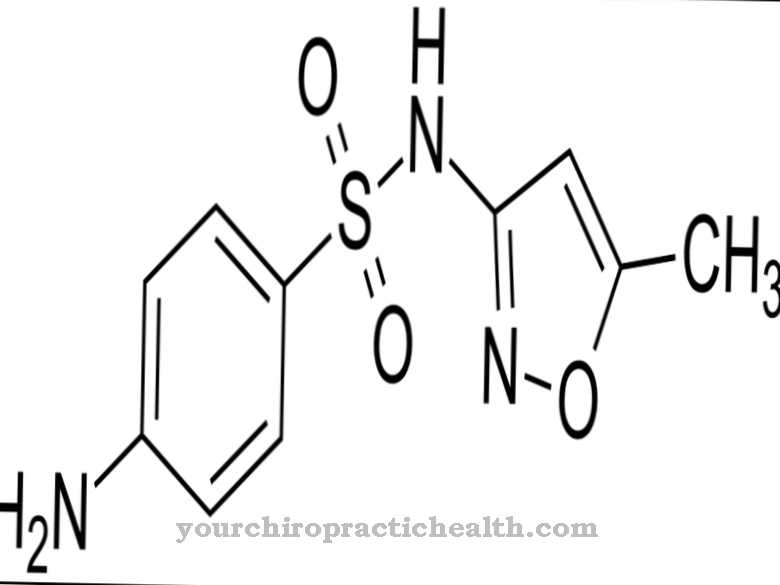The Beta-lactam antibiotics make up a family of antibiotics. It is characteristic of representatives of this group that their chemical structural formula forms a lactam ring consisting of four members. Beta-lactam antibiotics go back to the early penicillin, which is why they have a bactericidal effect and are used to fight various infections. The mechanism of action of beta-lactam antibiotics is due to an inhibition of the cell division of infectious bacteria.
What are beta-lactam antibiotics?
The so-called beta-lactam antibiotics are a group of anti-infectives that have a strong bactericidal effect and are used in human medicine to combat various infectious diseases.
The mechanism of action of all beta-lactam antibiotics is due to an inhibition of peptidoglycan synthesis in the course of cell division of infectious bacteria. Due to the antibiotic, these are no longer able to multiply. They die.
The chemical commonality of all representatives of the drug group of beta-lactam antibiotics is that their structural formulas have a beta-lactam ring. The moral mass of the beta-lactam active ingredients is therefore quite similar. The individual active ingredients in the group, however, have a different effectiveness against individual pathogens, which is due to a different penetration ability and affinity.
Accordingly, beta-lactam antibiotics are divided into different groups and generations. In the human medical or pharmacological literature, between Penicillins (e.g. benzyl penicillin, flucloxacillin), Cephalosporins (e.g. cefuroxime, cefotaxime), Beta-lactamase inhibitors (e.g. sulbactam) and other beta-lactam antibiotics (e.g. doripenem, ertapenem, imipenem).
Pharmacological effect
Beta-lactam antibiotics have a lactam ring in their chemical structural formula. All representatives of the drug group cause an inhibition (inhibition) of the cell wall synthesis of infectious bacteria. The cell wall is of essential importance for them, as they are not viable without it. Because without a sufficiently functioning cell wall, water can penetrate unhindered into the interior of the cell. This causes the bacterium to swell, rupturing the plasma lemma and thereby death.
Because of this mechanism of action, beta-lactam antibiotics are fundamentally ineffective against eukaryotic cells. Because these naturally do not have a cell wall, so that an inhibition of the cell wall synthesis cannot even take effect.
The active ingredients of the group exert a bactericidal (i.e., killing) effect on bacteria that are sensitive to beta-lactam antibiotics. In contrast to latent germs, the effect of the medicines is described as bacteriostatic. The antibiotics only prevent the reproduction or growth of bacteria without killing dormant germs.
Resistance rarely develops during the use of beta-lactam antibiotics. However, some bacteria are able to produce the enzyme beta-lactamase, which breaks down the beta-lactam ring in antibiotics. Since this plays an important role in the mechanism of action, the preparations are completely inactivated by beta-lactamase.
Against these bacteria, to which z. B. belong to staphylococci, beta-lactam preparations are therefore ineffective. To combat such resistance, various substances (e.g. clavulanic acid) have been developed in the pharmaceutical industry that inhibit beta-lactamase. Such substances are administered together with beta-lactam preparations in order to still be effective.
Nonetheless, numerous studies have shown that the often irresponsible administration of representatives of the beta-lactam group (especially penicillin) led to the development of resistance. These are caused by changes in the cell membrane or generally insensitive binding proteins. Such bacteria must be combated with other antibiotics, since representatives of the beta-lactam group are either only greatly reduced or even completely ineffective.
Medical application & use
Preparations belonging to the group of beta-lactam antibiotics are given to treat various infectious diseases. For example, community-acquired pneumonia, infections of the skin or soft tissues, gynecological infections, intra-abdominal infections or postoperative infections of the abdominal cavity are considered.
In general, beta-lactam antibiotics are used to fight both gram-positive and gram-negative pathogens. The field of application of these antibiotics is therefore comparatively broad. Those pathogens that turn blue in the course of a differential staining process are gram-positive. Analogously, Gram-negative bacteria are spoken of when they turn red.
Some representatives of the beta-lactam antibiotics can also be given to children. However, this depends on the specific drug or active ingredient, which is why a separate test is necessary.
Risks & side effects
Beta-lactam antibiotics can cause undesirable side effects during or shortly after treatment, but this does not necessarily have to be the case. The specific extent and the frequency with which the side effects can occur depend on the respective active ingredient.
Basically, however, there are headaches, general malaise, fever, skin reactions (e.g. small or large areas of redness, itching or a burning sensation), an increase in the platelet count in the blood, diarrhea, nausea and vomiting and other gastrointestinal disorders into consideration.
In particular, excessive skin reactions and fever are considered signs of general intolerance.In these cases, there is a medical contraindication, which usually leads to the immediate discontinuation of treatment.












.jpg)



.jpg)










.jpg)
